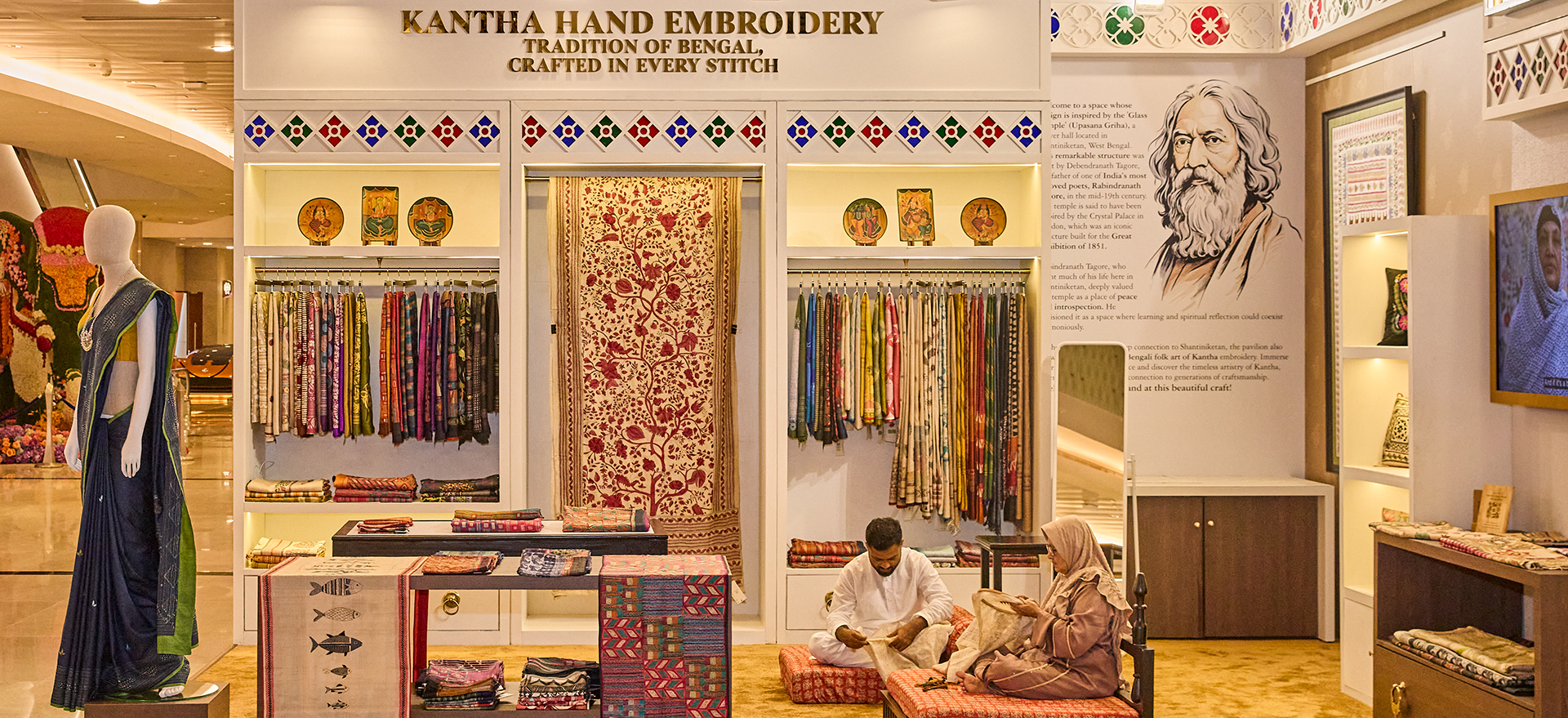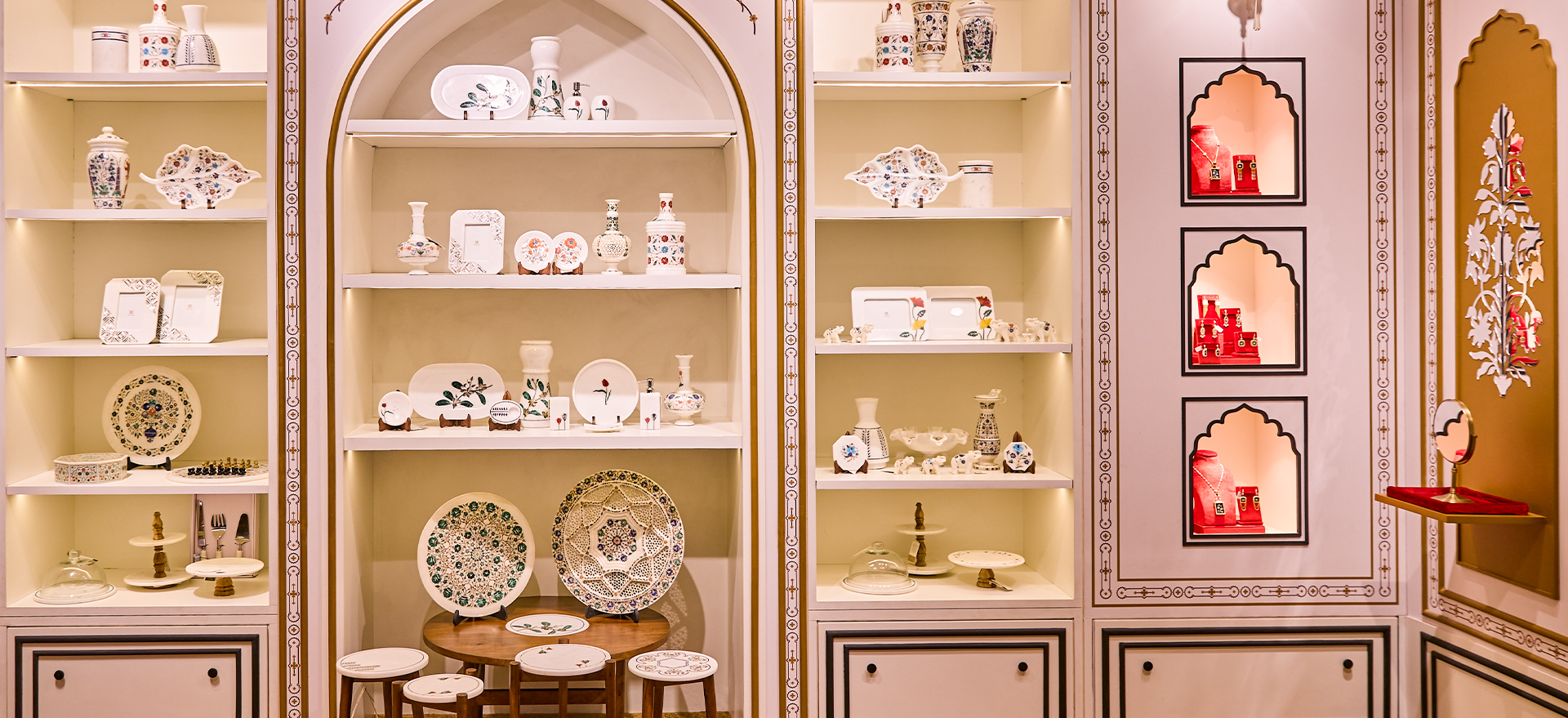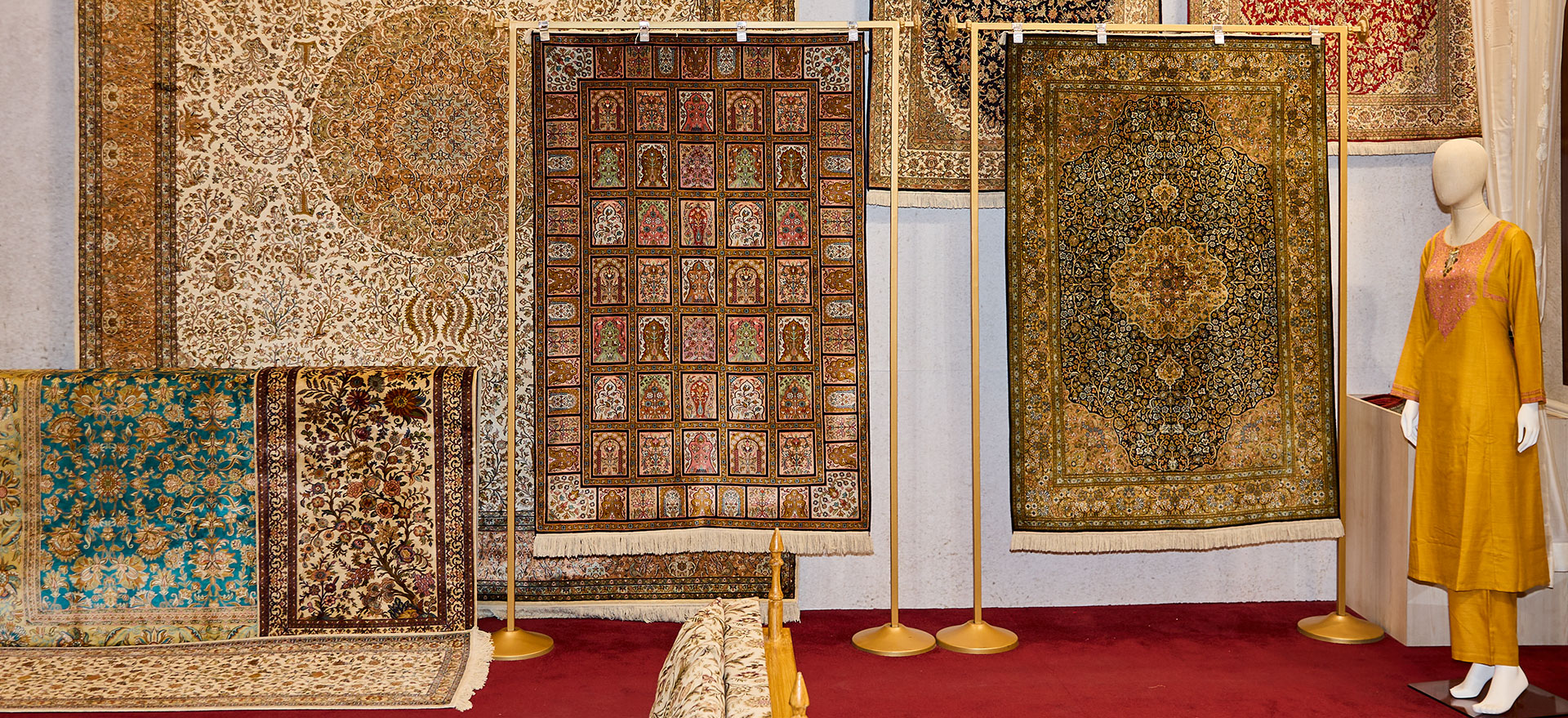
BACK TO TOP
The Art of Intricacy: 7 Beautiful New Pavilions at Swadesh
Delve into the details of some of India’s most intricate art forms as the unique exposition introduces seven heritage crafts this summer.| 29th Apr 2025
As you journey through the legacy of India’s ancient artforms, you uncover new layers of the country’s vast heritage, and new connections between its most diverse cultures. This summer, NMACC’s India-inspired art & craft exposition Swadesh unveils an all-new new lineup of regional pavilions that will transport visitors from the temple towns of Tamil Nadu to the Mughal courts of Agra! As you witness seven forms of impeccable Indian craftsmanship – brought to life through live demonstrations by master artisans – the unique art walk invites a deeper exploration of connections between far-flung regions, and traditions that have endured across geography and time.

Kantha Hand Embroidery (West Bengal)
Kantha, a traditional embroidery technique from West Bengal, has its roots in the humble courtyards of rural homes. Originally used to stitch together layers of saris to make soft quilts and blankets, the practice evolved into a decorative art form, passed down from mothers to daughters across generations. Typically worked in a simple running stitch on layered cotton, Kantha features motifs that range from florals and geometric patterns to figurative scenes, often framed by intricately bordered edges. Today, Kantha has found contemporary expression on saris, dupattas, stoles, and home textiles, where its vivid narrative legacies are imbued with fresh significance.
Chanderi & Maheshwari Weaves (Madhya Pradesh)
A historic handloom tradition from Madhya Pradesh, Chanderi traces its origins to a town of the same name, where the Koshti weavers from Jhansi settled in the 13th century. Nestled between the cultural belts of Malwa and Bundelkhand, Chanderi soon emerged as a thriving weaving centre known for its elegantly refined weaves. Similarly, Maheshwari handlooms take their name from the ancient temple town of Maheshwar in Madhya Pradesh, and are cherished for their subtle sheen and silken drapes. At Swadesh, visitors are offered a rare glimpse into the making of these exquisite textiles, where every motif, border, and weave tells a story of impeccable artisanship.

Marble Pachikari (Uttar Pradesh)
One of India’s most exquisite inlay traditions, Marble Pachikari flourished under Mughal patronage, with the Taj Mahal being the most luminous example. The form draws heavily from Persian aesthetics and was practiced primarily across Rajasthan and Uttar Pradesh. The craft involves the delicate embedding of precious and semi-precious stones into marble to create intricate floral and geometric patterns, which then go on to adorn walls, floors, and even cenotaphs with glittering detail. Swadesh brings this legacy to life with a showcase of everything from fine jewellery and décor to furniture accents, as well as a live demonstration by master artisans who continue to expand its legacy with meticulous skill.
Wood Carving (Tamil Nadu, Andhra Pradesh, Uttar Pradesh)
Whether it’s the ornate temple pillars of Tamil Nadu or the block-printing traditions of Uttar Pradesh and Rajasthan, Indian woodcraft is a masterclass in precision and patience. This pavilion offers a journey through the legacy of each one, depicting the intricately carved and metal inlay work from Uttar Pradesh to the block-printing heritage of Rajasthan and the temple carvings of Tamil Nadu. Master artisans will offer live demonstrations on how these centuries-old techniques are now being reimagined in contemporary formats, including decorative objects and even jewellery.
Kundalavelai Jewellery (Karnataka)
An ancient jewellery-making tradition from Karnataka, Kundalavelai finds its roots in the opulence of the Vijayanagara Empire and the rich iconography of South India. This special craft involves a close-setting technique of gemstones in gold. Over centuries, Kundalavelai has developed its own recurring motifs and the mosaic-like compositions become rich in narrative detail. At Swadesh, visitors can explore both silver and precious jewellery collections which offer a sense of how every ornament is both a sculpture and a story.

Aari & Crewel Embroidery with Kal Baffi (Kashmir)
Kal Baffi and Aari Crewel embroidery represent two masterful expressions of Kashmir’s craftsmanship, each rooted in generational knowledge and a deep reverence for nature. Kal Baffi is the centuries-old art of hand-knotting carpets practiced primarily in Srinagar, Baramulla, and Budgam. Aari Crewel embroidery, which uses a hooked needle and heavy wool yarn to create flowing chain stitches, often employs motifs inspired by the region’s lush flora and fauna. At Swadesh, visitors can encounter the full spectrum of Kashmiri textile artistry that reveals the extraordinary skill that goes into transforming threads into cultural heirlooms.
Pattachitra & Palm Leaf Engraving (Odisha)
Drawing from the sacred temple traditions of Odisha, Pattachitra and Palm Leaf Engraving are two of India’s most visually arresting narrative art forms. Pattachitra is a scroll painting tradition that dates back over a thousand years, characterised by bold linework and natural pigments, and traditionally depicts scenes from mythology. Stories from the Ramayana, the Mahabharata, and tales of Jagannath unfold in intricate compositions on fabric, silk, and dried palm. Complementing this form is Tala Pattachitra or palm leaf engraving, where artisans etch similar depictures in delicate detail onto dried palm fronds using styluses – often filling the grooves with lamp soot to highlight the intricacy. At Swadesh, these traditions come alive through richly painted textiles, engraved scrolls, and coconut shell hangings.

